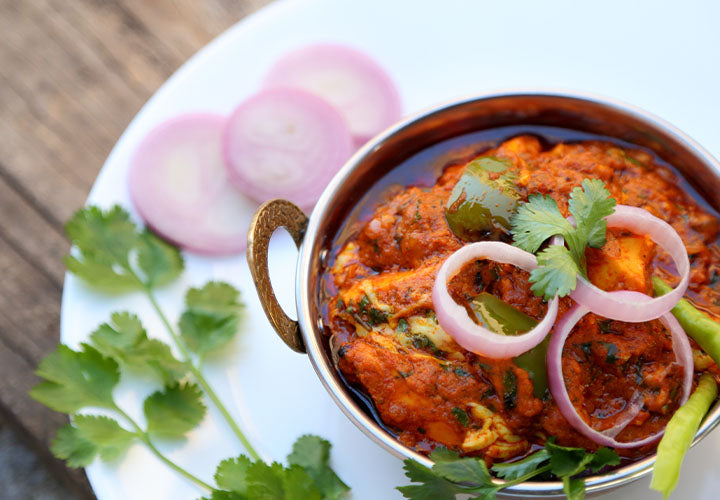05.18.2020
What is Mace Spice?

Mace is misunderstood. As a spice, it seems to hold the same status as marjoram—an ingredient everyone needs to have, but seldom cooks with. That’s too bad, because mace is one of the most complex and alluring spices in The Spice House’s collection. With mace’s mysterious history and its aggressive name, it is a spice worthy of understanding and cooking with.
What is Mace?
Mace is the sister spice of nutmeg. Nutmeg trees are the only plant to give us two spices. (As opposed to a plant like dill which gives us a spice and an herb.) Nutmegs are the actual seeds of the tree while mace is what is known as an airl—the protective coating of the seed.
Mace’s flavor and aroma differ slightly from nutmeg as its profile tends to be sharper and less sweet. It still carries distinct flavors of nutmeg, but with subtle notes of pine, black pepper, and coriander-like citrus. The essential oils of mace and nutmeg have different chemical compositions and noticeably different flavors even though they come from the same plant. This is similar to how an orange peel will taste and smell different than the flesh.
How Do I Use Mace?
Whole blade mace can be used just like a bay leaf, slowly releasing its flavor in long-cooking recipes. Try cracking the mace aril in half and use a piece to perfume a pot of steaming basmati rice, season some simmering chicken stock, or in a jar of homemade pickles, especially beets. You can also grind it yourself with one of these handy Microplane Spice Mills.
Ground mace should be bought fresh and used quickly, within 6-8 months. It can be used as an ingredient or condiment at the table. Instead of dusting nutmeg on your cappuccino, try mace instead. You can also sprinkle mace over a scoop of vanilla ice cream for some extra complexity. Both ground and whole mace should be stored in a cool dry place away from light and heat.
Recipe Ideas for Mace
Sweet applications like pumpkin pie, berry cobblers, or a hot toddy are obvious ways to use mace. Savory applications like Swedish meatballs, homemade barbecue spice rubs are welcomed surprises. Mace pairs well with other spices like cloves, allspice, ginger, vanilla, saffron, cinnamon, cumin, coriander, caraway, and fennel. The spice also works well with ingredients such as lamb, veal, pork, apples, sweet potatoes, carrots, mangoes, squash, cream, and cheeses.

Mace is a popular ingredient in the cuisines of Northern Europe—notably in English pork pie, Swedish meatballs, and rhubarb cakes and crumbles. In India, mace is a widely used many curry and chutney recipes. The whole blades are often toasted in a dry pan with cardamom, cloves, and black pepper before being pulverized in a mortar and pestle with fresh ginger, garlic, and turmeric until it forms a paste. This lamb korma recipe is a great example of how Indian cuisine uses mace with other complementary spices to form a savory dish.

If you have any questions about mace or have a favorite mace recipe to share, email us at spices@thespicehouse or leave a comment below.

